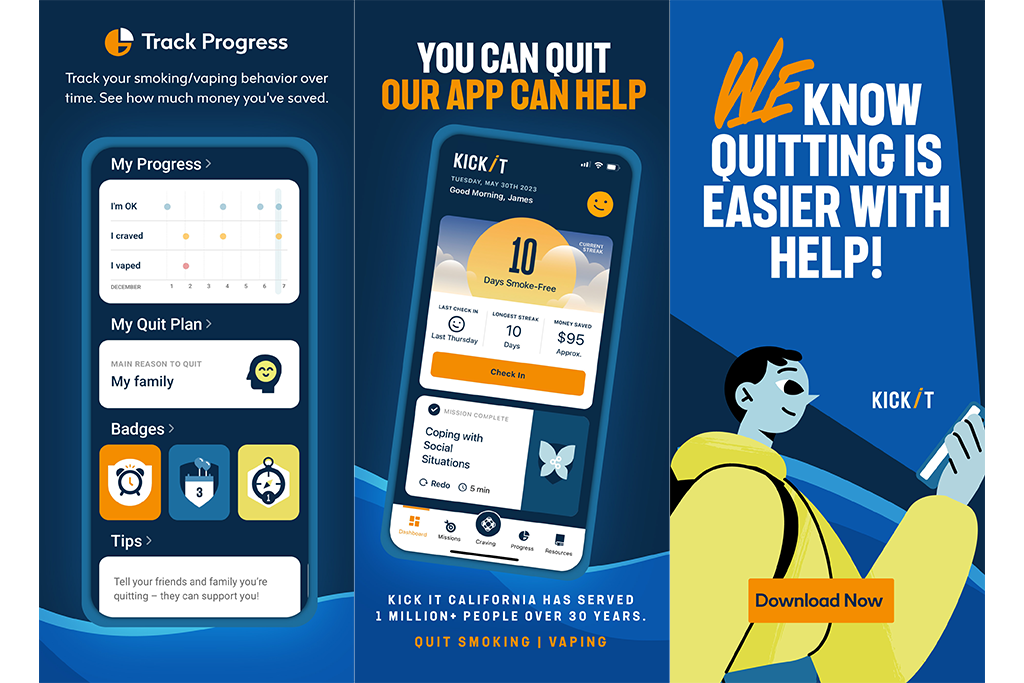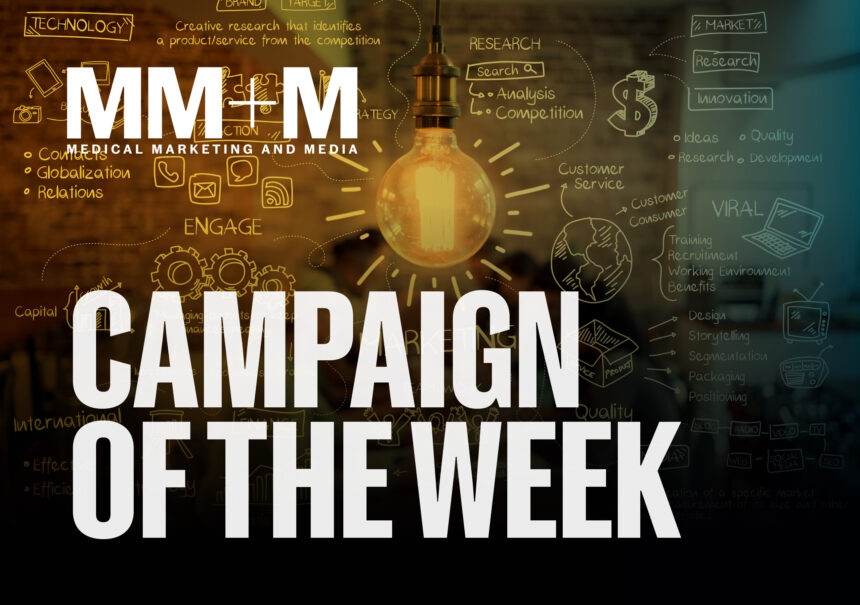Quitting smoking is, of course, no easy feat. In fact, it’s one of the more challenging habits to beat.
According to the Centers for Disease Control and Prevention, more than two-thirds of smokers report wanting to quit and yet each year less than 8% of them are successful.
There are a number of factors that contribute to the difficulty of quitting smoking, but it is achievable with the right support.
That’s why digital marketing agency Mindgruve and Kick It California, the longest-running statewide phone-based tobacco cessation program in the United States, have rolled out a helpful tool to put in the hands of everyone looking to quit smoking or vaping.
The Kick It app is not the first smoking cessation app from the program — there were two earlier ones — but this one combines a focus on smoking and vaping with an innovative twist.

The Duolingo effect
Recognizing the value of a gamification approach, which recent research indicates is useful in terms of behavior change paired when with a user-friendly design and palette, the Mindgruve team looked to apps that dole out rewards for accomplishments.
Those that are popular among consumers include Duolingo and Streaks as well as others focused on behavior medication for inspiration.
Emily Aughinbaugh, Kick It California’s program director, says previous apps from the organization were developed quite a few years ago and didn’t include things like push notifications, badging or rewards — key features that drive engagement.
Mindgruve brought a check-in feature to the app, which was a pivotal development according to Aughinbaugh as it offered Kick It California the opportunity to educate people on slip ups on the road to quitting. It also allows the organization to communicate with users and keep them from getting discouraged.
“With our old app, you basically put in a quit date and it was a simple tracker that would just count the days,” she says. “Then, if you decided that a slip was a relapse and you needed to reset your quit date, you lost all your history. The new app is more in keeping with best practices around these types of behavior change apps.”
Instead of starting from scratch after a relapse, the app will still remind users of their longest streaks without a cigarette or vaping, encouraging users to try and surpass them once again.
Peter Pryputniewicz, creative and technical project manager at Mindgruve, explains why the check-in aspect of the app was so important to the team at the agency.
“When you start observing yourself, it changes your behavior,” he says. “You might not even have to do anything except decide you’re going to write something down. The self-observation aspect of that one little act creates this whole array of positive user feedback. That one action has a lot of ripple effects.”
Reducing downside risk
To help reduce the chances of a slip or a relapse, the Kick It and Mindgruve teams point to the cravings button as another invaluable part of the app.
Andrea Pratt, a psychologist working with Kick It California, helped to design the breathing routines, guided visual exercises and games that help users get through the moment of craving without reaching for a cigarette or their vape pen.
In terms of supporting the effort from a marketing perspective, Kick It California is working with a limited budget.
However, the organization is turning to Mindgruve for a small paid search campaign as well as their own social media platforms to spread the word about the app.
“We want to provide people who use tobacco products with evidence-based information about how to quit these products and how to get support to learn about dependence and strategies we know have some evidence behind them,” Pratt says. “I also want people to know that we understand quitting tobacco can be hard, but there’s support available and if you just keep trying, we believe you’ll be successful.”
In order to get users to come back every day to the app, a fresh look and inviting tone was necessary.
Clint Walden, executive creative director at Mindgruve, notes that the blue, gold and orange palette of the app was inherited from a larger rebranding of Kick It California. From there, the Mindgruve team built on it to create something that felt “bold and clean.”
“Sometimes healthcare can be kind of a drag and we wanted to create an app that is consumer friendly and approachable,” he says. “We wanted to make something that you want to come back to in terms of the experience, its look and feel, and the copy and its tone.”
For Walden, who lost his father, a life-long smoker, to lung cancer, the work on the app has been personally rewarding and a chance to partner with an organization that doesn’t have a big budget and isn’t looking to merely sell commodities but is instead on a mission.
“What I like about this is there’s an approachable way to change somebody’s life for the better and, even, to save a life,” he says.







